What and how best to feed ancistrus?
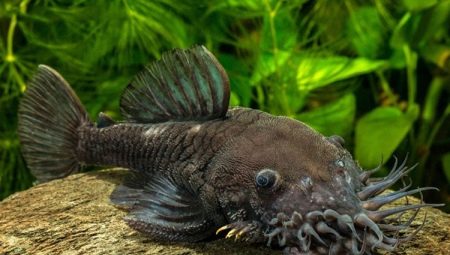
Life in an aquarium is distributed over different levels. There are creatures living near the surface, in the upper layer of water. Most of the ornamental fish prefers to occupy the middle floor, occasionally rising to the surface or descending to the lower layers. And, of course, there are inhabitants of the lowest, bottom level. Among the inhabitants of the aquarium bottom, a small beautiful ancistrus fish stands out as a bright spot - fish cleaner, conscientious orderly of the underwater world.
Suitable feed
Blue catfish-ancistrus - very unpretentious omnivorous fish, which experienced aquarists gladly keep, and beginners easily cope with their maintenance.
Possessing a flattened teardrop-shaped body, covered with bone plates, and a round sucker-mouth, the catfish crawls along the bottom, decorations, glass and leaves of underwater plants, clearing it of settling debris and algae. But while ancistrus will eat anything that can be eaten, the aquarist needs to take care about proper nutrition of catfish so that the fish can live a long, fulfilling life.
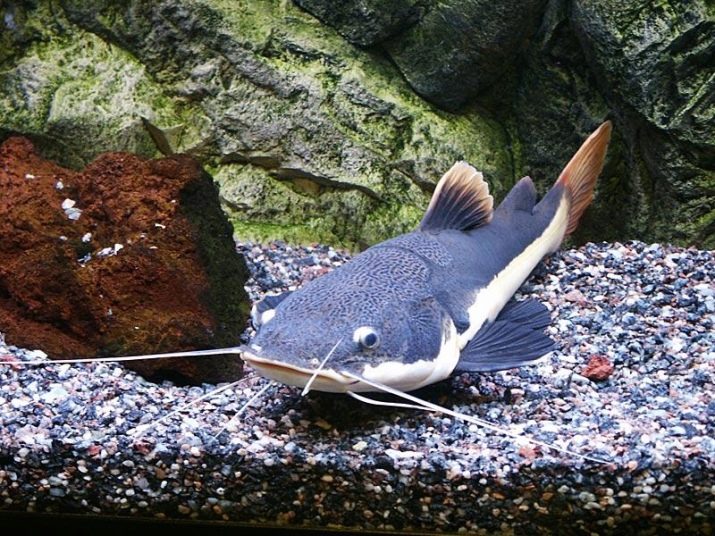
Cleaner fish feed on algae, but the amount of this vegetation in the aquarium, without additional feeding, often makes the ancistrus starve and float to the surface in search of food.
Therefore, knowledgeable people who care about the health of all residents of an indoor reservoir, it is advised to feed chain mail catfish using feed containing the necessary substances.
The priority in the catfish menu is given to plant foods. The basis of the diet is seaweed, followed by carrots, squash, lettuce and spinach leaves. I like the fish very much cucumber... You can give scalded dandelion greens, pumpkin pieces, cabbage leaves, green peas and even small strips of bell pepper.
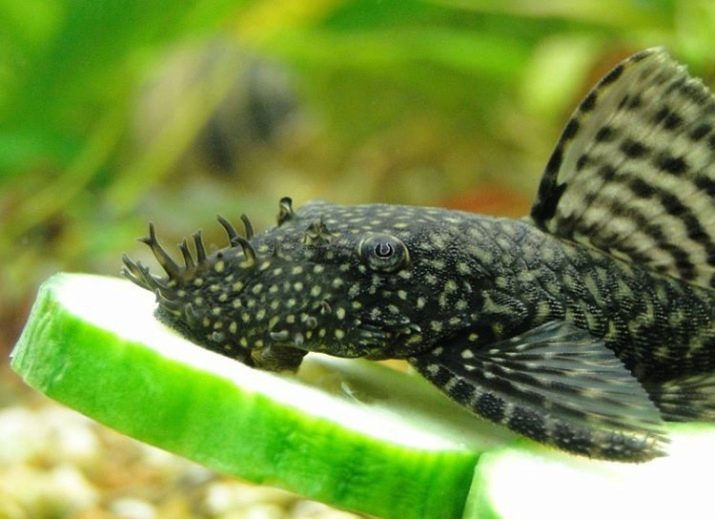
In addition to soft plant foods, ancistrus needs cellulose and lignin. These substances help the fish digest better.
As a source of cellulose, you can use hardwood driftwood purchased from the pet store or found in the forest. It's good if you find a suitable snag at the bottom of the reservoir. It will already be saturated with water and will not float up after diving to the bottom of the aquarium. The selected piece of wood must be prepared for use, boiled in lightly salted water.
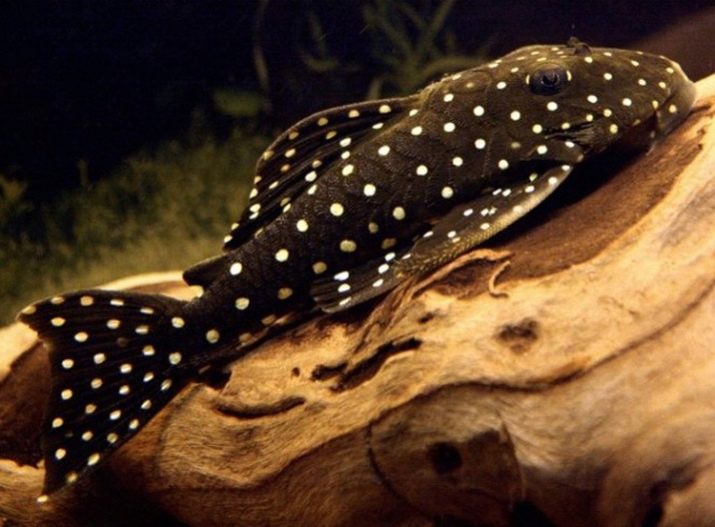
They eat ancistrus and live food, giving preference to tubifex, brine shrimp and bloodworms. But this should not make up a significant part of the diet, since the catfish can overeat and die.
If you do not have the opportunity to prepare food for the fish yourself, then you can use ready-made feeds, specially developed for catfish. The feed is produced in the form of tablets, flakes or granules, which quickly sink to the bottom. These foods already contain all the vitamins and minerals you need, saving you time for feeding. According to the owners, it is better to use ready-made feeds from companies such as Tetra and Sera.

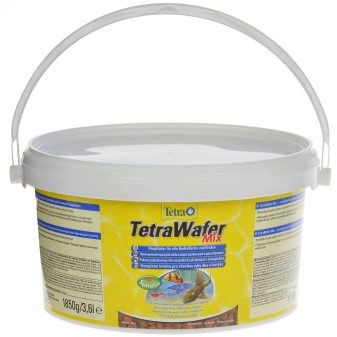
Fundamental rules
Feeding an Ancistrus is easy, but it is important to follow some feeding rules.
- All food for the catfish should be at the bottom, as this is a bottom fish.
- Before feeding, pieces of plants should be scalded with boiling water to destroy microbes and soften the upper hard crust.
- So that the pieces of plants do not float, they are pricked onto a fork or attached to some weights. The uneaten residues are removed.
- Although at home the catfish is an omnivorous fish, this does not mean that it will eat up the rotting food debris of other fish, as well as their waste products.
- It is worth closely monitoring the behavior of the "sticky", if the fish begins to eat the living leaves of aquatic plants, it means that it does not have enough food, and it is starving.
- Ancistrus easily scrapes soft green algae from the walls of the aquarium, but the catfish will not cope with a "black beard" or Vietnamese, as it is very tough and does not lend itself to its teeth. Not every metal point can handle this algae.
- The ratio of plant to animal food should be 4 to 1, that is, 80% are plants and 20% everything else.
- Do not overfeed the fish by adding too much food, as the pieces that are not eaten on time will start to deteriorate and pollute the environment. Substances released by decaying residues lead to poisoning and death of animals.
- A large amount of protein can cause indigestion in catfish, especially if you put a lot of bloodworms into the aquarium. The catfish hunts with pleasure for this living creature, sucking it out of hiding places. Therefore, it is better to give protein foods frozen.
- And also fish feel great with mixed feeding, when ready-made feeds are diluted with natural additives. The main thing is that the food is complete and varied, then the ancistrus will not only live a long time, but also reproduce as much as possible.

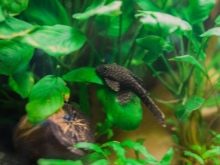
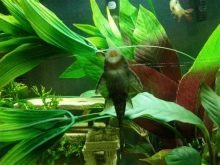
Feeding fry
If you followed all the conditions for keeping and feeding adult fish, then over time you may be faced with the question of how and what to feed the fry of these cute and healthy fish.
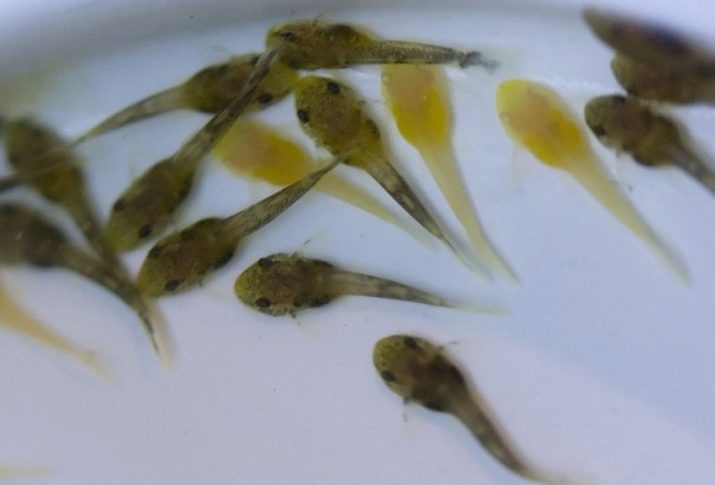
The health of future offspring must be taken care of in advance. Therefore, experienced aquarists advise fish preparing for spawning should be placed in a separate aquarium and the proportion of protein feed should be increased to half of the diet. It is better to give food frozen. Suitable from vegetable feed slices of cucumber, zucchini, pumpkin, asparagus and bell pepper.
The female is kept in the spawning grounds only until the eggs are laid.In the future, it is returned to the common aquarium, and the male, having fertilized the spawned eggs, continues to look after the nest, not allowing anyone to approach his territory. Even trying to remove uneaten food pieces makes him extremely anxious.
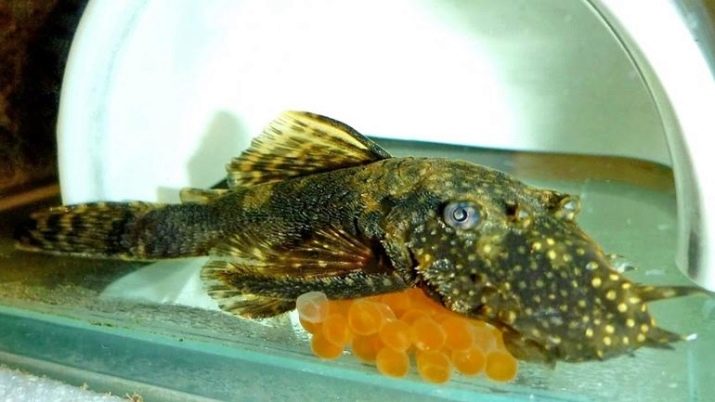
Ripening of eggs lasts about a week. All this time, the male does not leave the nest. After the hatching of the larvae, the father looks after them for another two days until the little ones start feeding on their own. After that, the father is returned to the common aquarium, and the fry are given special food.
In the first days, the kids will not be interested in food, but on the third day they can be given a fresh cucumber crushed into dust. And also they can be given special dry food.
When the little ancistrus grows up, they are offered small pieces of vegetables, pinned on a fork. You can give lettuce leaves scalded with boiling water 2 times a week.
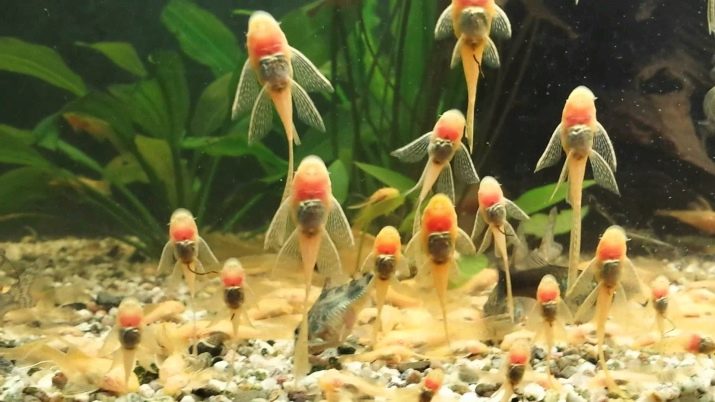
The older the kids get, the more capacity is required for life., therefore, a week after hatching, the fry should be moved to a larger aquarium, at the bottom of which a mangrove snag or a piece of vine should be placed.
For grown-up crumbs, you can add a little protein feed, diversifying the menu with a bloodworm a couple of times a week.
As a daily feed, you can use the prepared food tablets. They feed babies in small portions, but often.
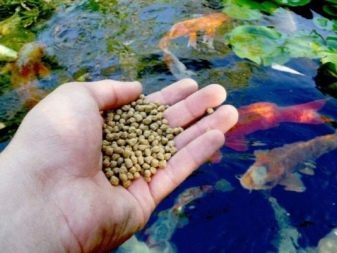
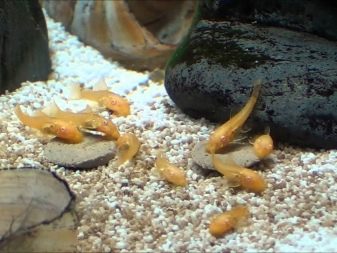
Using these simple techniques, you can grow healthy and beautiful fish, the diet of which will change slightly.
Adult fish nutrition
Adults living in a common aquarium feed on algae that forms on glass and decorations, laboriously scraping them. But not only this is included in their diet. Ancistrus can pick up pieces of food that have fallen to the bottom and are thrown to other fish.
You should be aware that prepared foods containing large amounts of dried algae can cause bloating in your fish.
To prevent this from happening, it is important to follow the feeding norms, not allowing the fish to overeat.
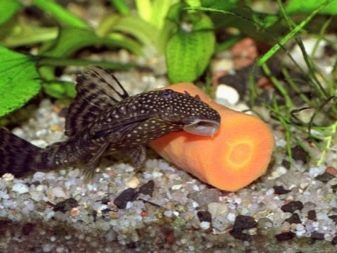
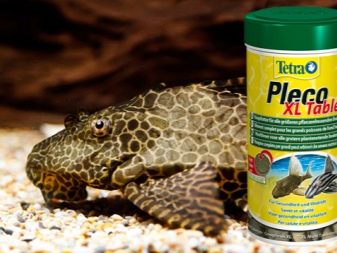
Well-fed fish do not reduce their activity, while continuing to actively clean the aquarium, so you should not keep them in a hungry body. Let your fish eat well and varied, then you can admire these beautiful interesting creatures for a long time.
A video about the Ancistrus can be seen below.








